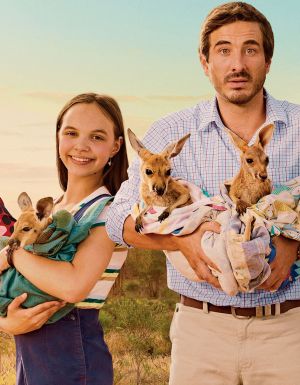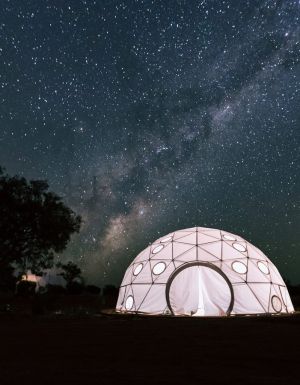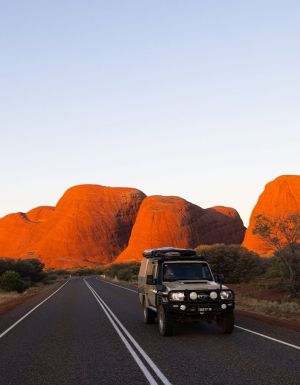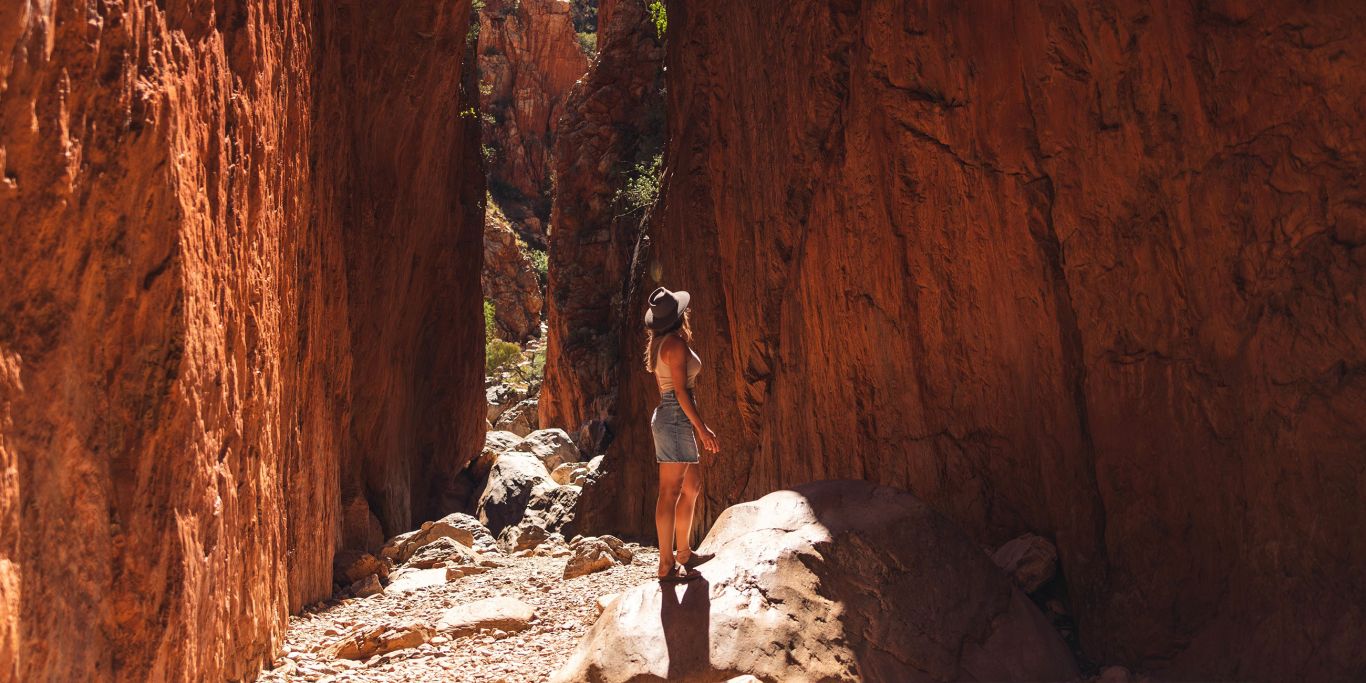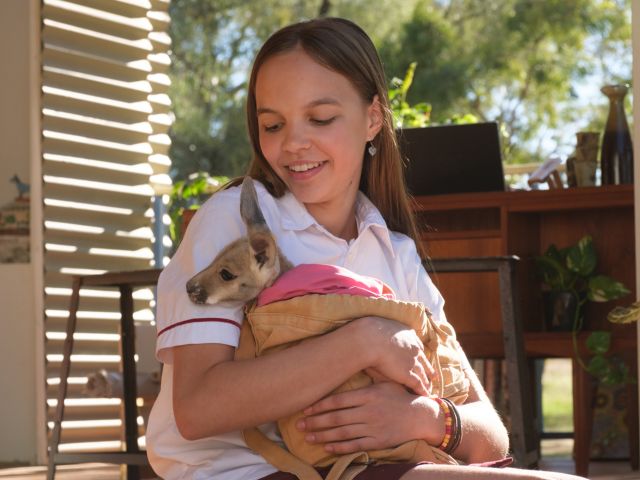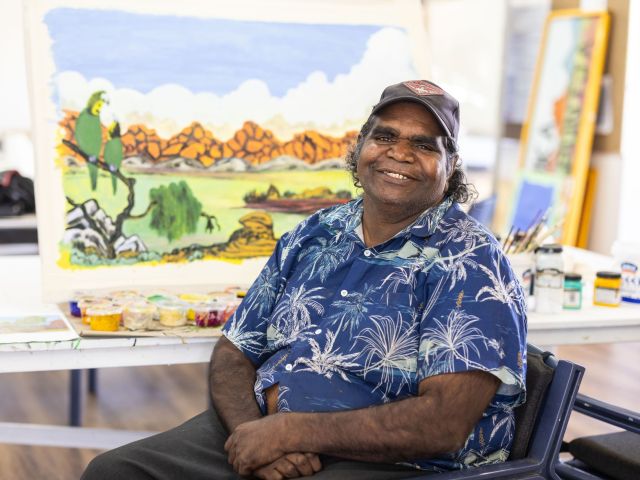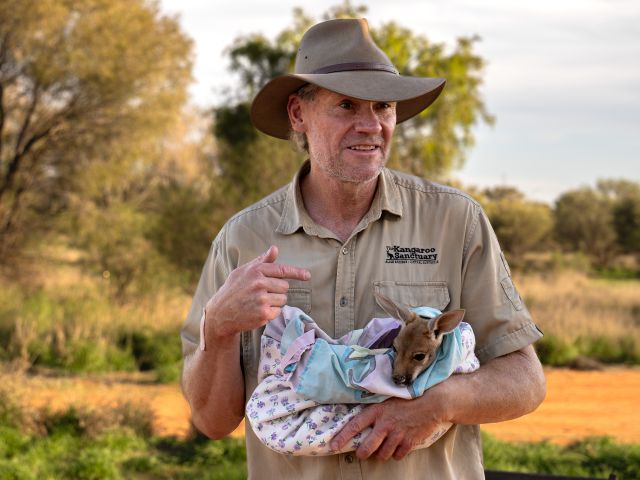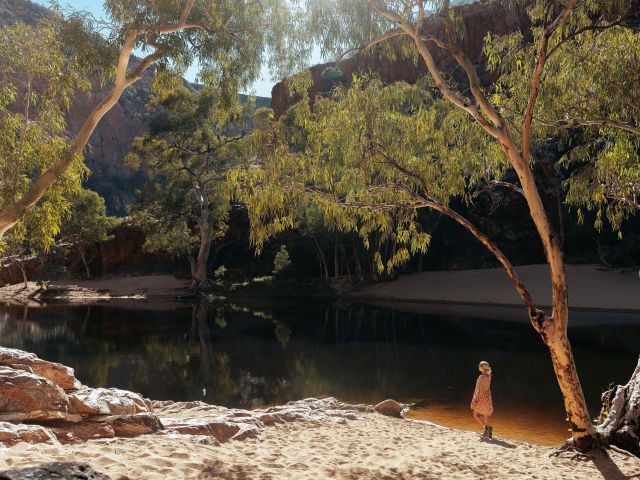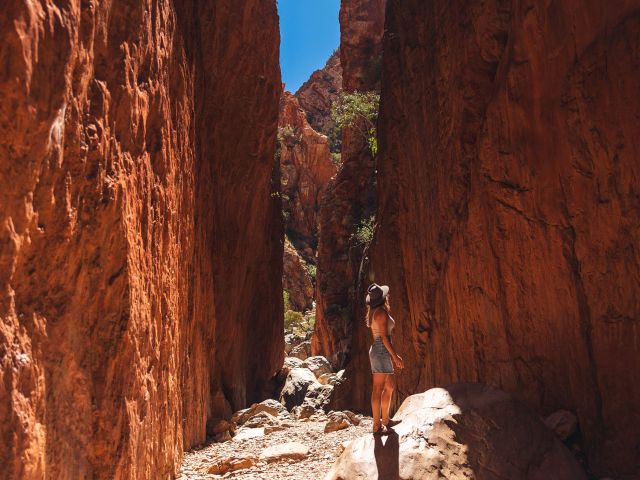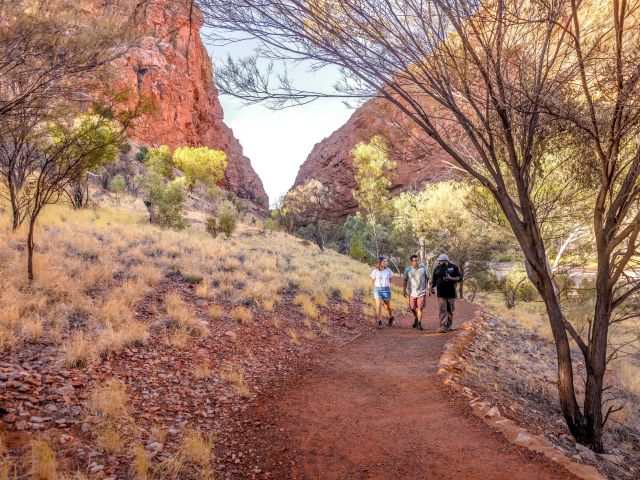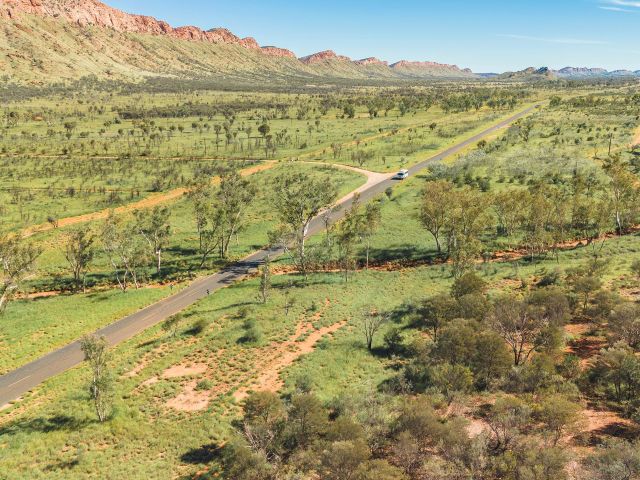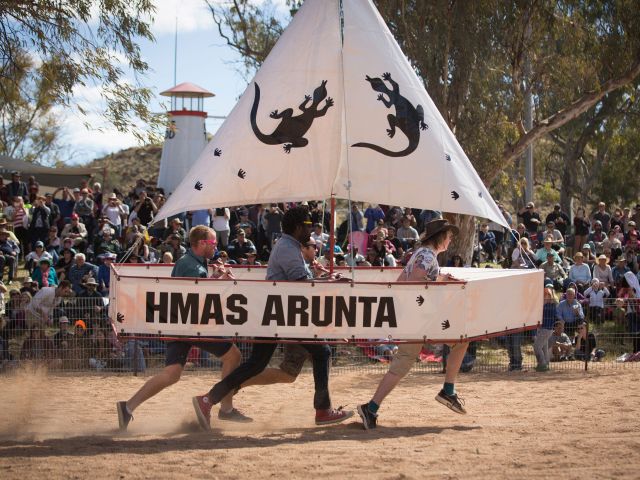Alice Springs sits at the heart of the nation. Behind the headlines, you’ll find beautiful landscapes, ancient cultures and magic moments. Here’s what locals have to say.
After a rainy week in April, Alice Springs/Mparntwe is ripe like a desert fruit. The air is sweet, the creeks are swollen, and the landscapes are flush with vivid green foliage. Come nightfall, the annual Parrtjima light festival competes with the glittering outback starscapes, casting brilliant images against the shadowy backdrop of the MacDonnell Ranges. Small children chase projections of Aboriginal art across the ground or stand mesmerised in front of a giant illuminated puppet roving about the festival. The experience is nothing short of magical. But it’s a far cry from the portrayal of Alice Springs that has pervaded over the last few years. We caught up with some locals to go behind the headlines and get a glimpse into a totally different side of Alice Springs.

Is it safe to visit Alice Springs?
The Red Centre is a once-in-a-lifetime destination that’s a fixture on bucket lists around the world. But given the reports of unrest and a crime crisis, should you reconsider plans to travel to Australia’s unofficial outback capital? The answer is a definitive no, according to John Stafford of Alice Springs Expeditions , “people who have booked tours have asked me if they should defer, and I’ve said to them, absolutely not. I’ve convinced them to come, and without exception, everyone in the last month has said that Alice Springs is nothing like what’s been portrayed".
John points out that the issues highlighted in the media also apply to many other towns, suburbs and regions in Australia, but Alice Springs receives a disproportionate amount of attention.

“Don’t get me wrong, [the incident at Todd Tavern] isn’t great. I’m not trying to sugarcoat it. But at the same time, is it reflective of what happens here day to day? No, it isn’t. It’s sad to think that people might potentially miss out on a really awesome experience [coming here] based on what I consider to be unfair press."
As Alice Spring heads into winter, temperatures cool and the night sky becomes increasingly vivid. The town is abuzz with a roster of outback festivals, like the quaint and quirky Alice Springs Beanie Festival – a four-day celebration of hand-crafted headwear from the town and the remote communities that surround it. “The proof is in the pudding," says John, “when visitors come here, they’ve expected one thing and they see something very, very different".

A place of outrageous beauty
Anna Dakin moved to Alice Springs from London six years ago. Now, she spends her days taking visitors out for painting excursions in the countryside with her tour company, Art Tours of Australia .
“[The most prevalent change] I’ve noticed in the town is the drop in visitors and a sense of frustration shared by myself and other tour operators," she says.

“This town is so gorgeous, it’s outrageous … there are all of these little magical moments that happen here that are a thousand times more powerful than the brief moments of unrest focused on by the media," she says. Anna recalls her most recent moment of magic, a leisurely Friday evening spent listening to a talk by a bush food expert before heading to a new cocktail bar, Crimson Chat, for a bush tucker-inspired cocktail and strolling home beneath a star-lit sky. “I could never walk from my home in London … the level of safety I [feel] walking around Alice Springs is really incomparable to what I felt in a big city," she says. “It’s easy to forget that everywhere we visit has some kind of danger. Alice Springs is no different, but the danger is actually relatively low out here.
On Anna’s last art tour, the group fell into a discussion about what makes the landscape feel so profound and magical. “It all leads back to the culture that has shaped this environment. There’s a level of frustration among people who come [on tour] with me that they don’t know more about the incredible cultures of Central Australia [such as the Arrernte and the Aṉangu cultures]… It’s a shame that when people think of Alice Springs they think of danger, when actually what is here, is vibrance and inspiration and some of the most ancient and inspiring landscapes in the world."

A deeper issue
Local frustration surrounding the media’s fixation on crime is deepened by its failure to discuss the more complex and nuanced reasons for its existence. “[The situation] is the outcome of decades of systemic underinvestment, neglect and punitive measures and controls, many imposed and still remaining from the NT Intervention", wrote Australia’s Aboriginal and Torres Strait Islander Social Justice Commissioner June Oscar in a report calling for community-led solutions in Alice Springs.
Local Arrernte Elder Paul Ah Chee shares the sentiment of frustration with the media’s hyperfocus on crime in Alice Springs. “I do think that it’s somewhat blown out of all proportion, and manifests in people outside of Alice Springs believing that the town is completely chaotic and lawless," he says. Paul also cites poverty and The Gap between Aboriginal and non Aboriginal people as a contributing factor to the incidents of unrest that are often left out of media discourse on Alice Springs: “The gap is probably increasing rather than decreasing. Certain elements of closing the gap have been addressed and we can see some incremental positive change, but on the whole it’s a challenge."

Although systemic issues don’t have an overnight solution, it underscores the importance of visiting, learning and fostering cross-cultural understandings. “It’s a beautiful little town," says Paul. “It’s got natural beauty and some great tourism products that people can go and visit. The people here on the whole are friendly and it’s a wonderful place to visit…There’s lots of festivals, there’s lots of celebration. It’s a very creative town."



